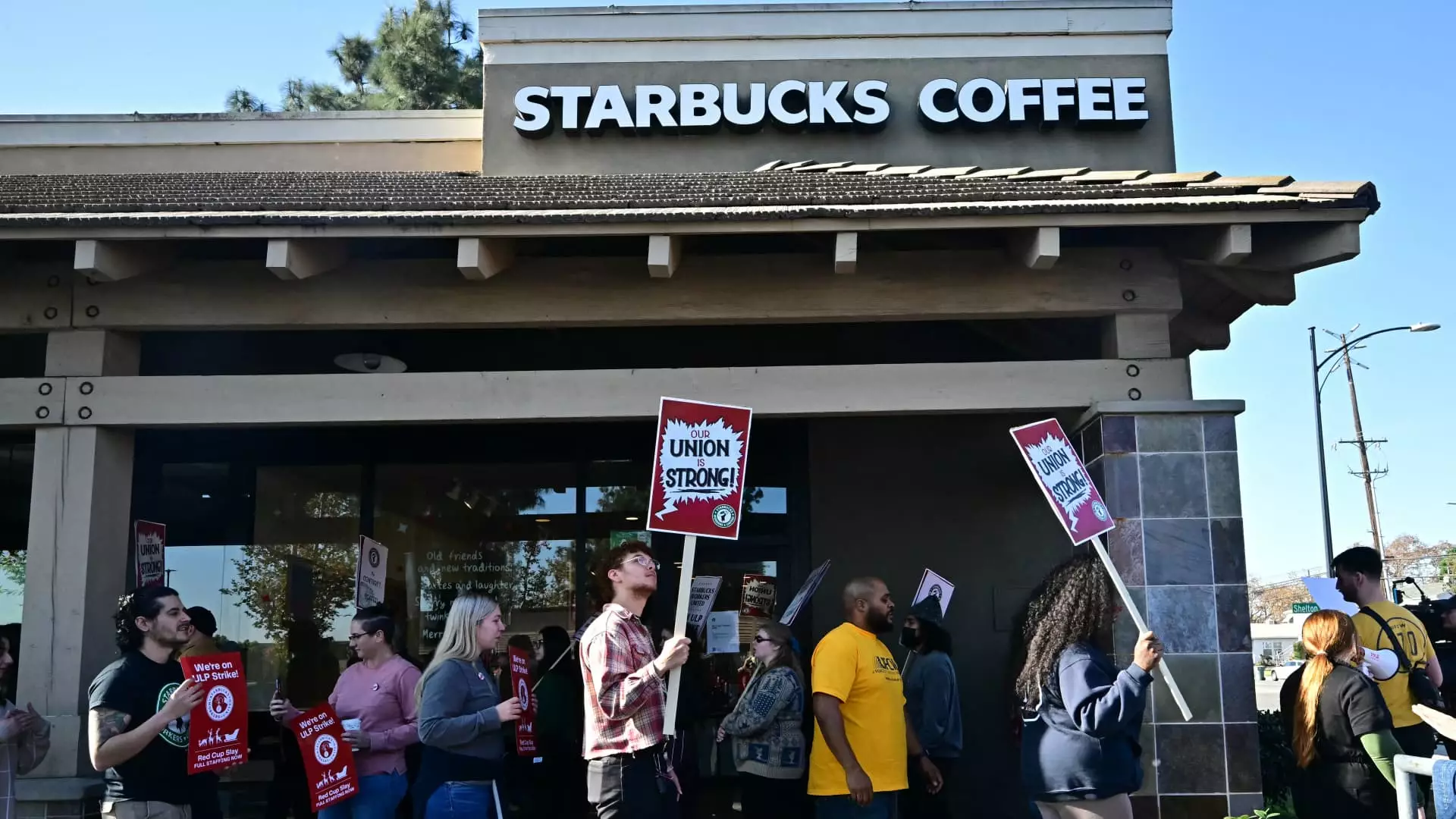In a significant escalation of labor unrest, Starbucks workers across the United States are currently involved in a strike that has expanded to approximately 5,000 employees at over 300 locations in 45 states. This movement comes at a critical time as Starbucks enters its busy holiday season, and while it represents only about 3% of the company’s U.S. cafes, the implications are vast. The strike, organized by the Service Employees International Union (SEIU) alongside Starbucks Workers United, seeks to highlight ongoing disputes surrounding alleged unfair labor practices and lengthy contract negotiations that have stalled for numerous employees.
Central to the employees’ demands is a robust hike in their minimum hourly wage. Workers are advocating for a 64% immediate increase followed by a total of 77% over a proposed three-year contract. Lynne Fox, the president of the Workers Union, articulates the sentiment of the baristas, asserting that they recognize their worth and are unwilling to accept proposals that fail to honor their contributions as essential partners in the Starbucks community. The stark contrast between their demands and the company’s response indicates a growing dissatisfaction among staff, who feel undervalued in light of the coffee giant’s substantial profits.
On the other side, Starbucks executives have dismissed the union’s demands, labeling them as “not sustainable.” In a memo, executives emphasized the overall compensation structure, claiming that employees who work at least 20 hours per week can average $30 an hour when considering pay and benefits. Sara Kelly, Starbucks’ executive vice president, stated that the union had chosen to disengage from recent negotiations, expressing readiness from the company’s side to return to discussions when the union chooses to re-engage. This exchange reflects a growing divide between corporate management and the workforce’s expectations.
This strike is not merely a Starbucks issue but part of a broader trend affecting labor relations across various industries in the U.S. With an increasing number of workers vocalizing their demands for better pay, working conditions, and representation, the Starbucks situation exemplifies a critical moment within the labor movement. It showcases a new wave of advocacy where employees are increasingly willing to challenge corporate giants for fair treatment and equity in the workplace.
As the strike unfolds, all eyes are on Starbucks to see how it will respond not just to the immediate demands of its workers but also to the growing public sentiment that advocates for fair labor practices. The management’s approach to these negotiations may well set precedents for how corporate entities engage with labor movements going forward. As the holiday rush approaches, both the company and the striking workers stand at a pivotal crossroads, with the potential for future negotiations to shape the landscape of labor relations in retail and beyond.

